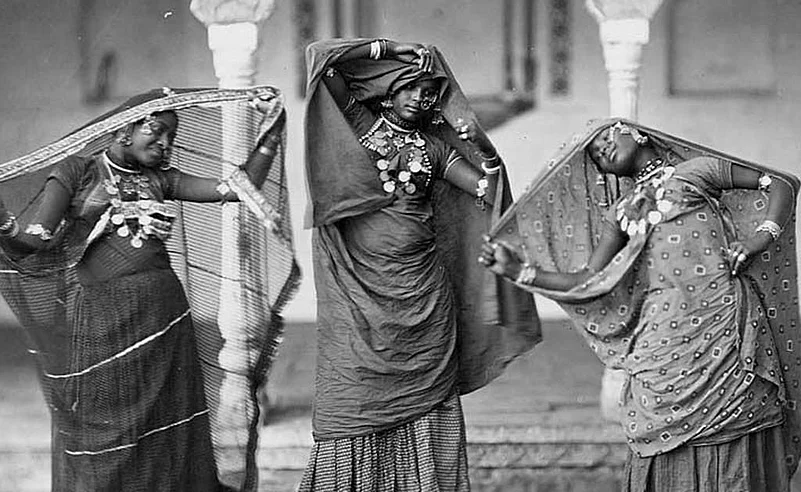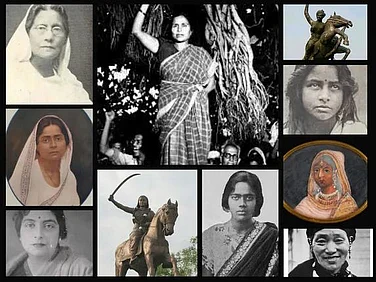200 years witnessed a substantial period of influence of British imperialism on India, which further intensified into an 89-year direct rule over the motherland. How fascinating it is that, throughout this grim era when our people and lands were being exploited our identity endured through the medium of our art. Despite the indeterminate path to freedom, our cultural heritage outlived our struggles and thrived alongside the nation's eventual prosperity. Let’s explore some of the prominent Indian art forms that endured the colonial period, how they managed to survive, and their continued importance today.
Classical Dance Forms
Bharatanatyam
Starting its journey from the Tamil Nadu state, Bharatanatyam is one of the old-world classical dances of India. It has complex steps, theatrical body movements and positions, and beautiful and graceful attire. When the British came to power, they discouraged classical dance forms such as Bharatanatyam due to their involvement with the rituals performed at temples. Nevertheless, it took a few enthusiasts and revivalists like Rukmini Devi Arundale to work towards keeping this art form alive and evolving. Institutions like Kalakshetra in Chennai have been instrumental in teaching and propagation of Bharatanatyam.
Kathak

Kathak is one of the Northern Indian dance forms and it includes the narration of a story through movements, steps, and turns. As stated earlier, British colonisation unfortunately led to a reduction in demand for Kathak influencing the art to change its approach to survival. This allowed the Kathak dance form to survive the dramatic socio-cultural change through the patronage of princely states like Jaipur and Lucknow and the re-contextualization of performances. Today Kathak remains one of the most popular forms of Indian classical dances and is admired not only in India but also across the world.
Classical Music
Carnatic Music

Another classical music tradition that continued to thrive was Carnatic music in South India despite the interference of colonial entities. Rooted in Tala, more elaborate and dedicated in nature, Carnatic music became prominent in Royal Courts and nobility classes. Despite the adversities, musicians like Tyagaraja, Muthuswami Dikshitar, and Syama Sastri did their best to preserve this art form and spread it among people. Music academies and sabhas or cultural organizations offered opportunities for performance and training to ensure the longevity of the art form.
Hindustani Music

Hindustani classical music, predominant in North India, was not immune to changes during the British period either. But once again, musicians remained persistent and this form of art was able to evolve to the next level. Schools/ gharanas such as the Gwalior, Agra, and Patiala gharanas were very instrumental in preserving the purity and the legacy of Hindustani classical music. Other factors that played a major role in the preservation of classical music included the support of princely states for music and the rise of All India Radio as a means of broadcasting classical music.
Visual Arts
Miniature Paintings

Art in the forms of miniature paintings, which are characterized by their fine workmanship, as well as bold lines and colors, were practiced well into the British colonization of India. The regional schools such as Mughal, Rajput, and Pahari were evolving to conform to the demands of a different patronage and change of taste. The artists were able to adapt to the new influences and incorporate them into the tradition, thus preserving this delicate artistry. The support of regional courts and the adaptation to new subjects and techniques helped miniature painting endure.
Madhubani Art

Originating from Bihar, in the Mithila region, Madhubani art has several features such as several geometrical patterns as well as several mythological themes. Even after colonization started influencing the socio-political aspect of the region, the art form still remained in the hands of the village women. The continuation and appreciation of this folk art during the post-independence period also helped in its survival and growth. The role of the government and especially the efficiency of NGOs has significantly influenced the promotion of Madhubani art.
Handicrafts
Weaving and Textile Arts

Handloom weaving traditions such as Banarasi silk, Kanchipuram silk, and Pashmina shawls of India also came under threat from British industrial-produced textiles. However, the décor and sophistication of the handwoven fabrics in India enabled these traditions to withstand the test. The formation of cooperatives and attempts to recover the dormant arts have also enhanced the sustainability of these art forms. Handmade traditions were passed through the family line, and the encouragement of the Swadeshi movement focused on utilizing local fabrics.
Pottery

Some of the historical pottery like the blue pottery of Jaipur and the terracotta art of West Bengal was able to sustain through colonial rule. Due to these changes in demands and preferences, artisans were able to change the way they worked to sustain those arts. Today, Indian pottery is considered to be one of the most valuable crafts of the country that reflects the history of people. From the government’s policies like the craft councils and the exhibitions, these traditions were able to be sustained.
The fact that native Indian art forms were able to sustain themselves even when Britain colonized India is an index to Indian artists. These art forms being passed on through generations, preserved through evolution and reinvention form an indispensable part of Indian culture. Being optimistic and looking forward to the recognition of the Indian arts necessary, it is imperative to contribute to the continuation of these traditions for the next generations.

















